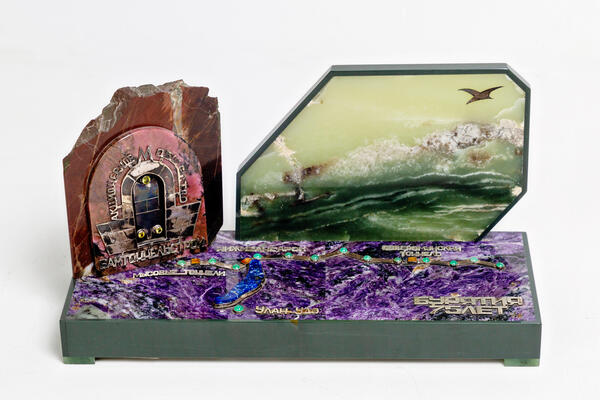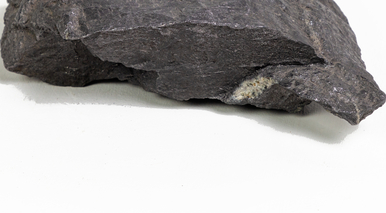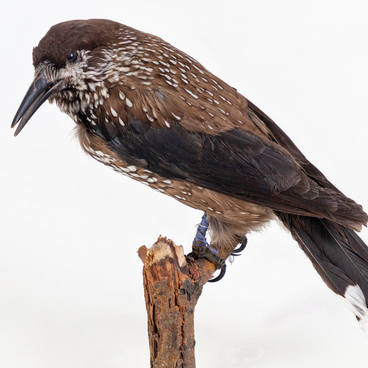The panel is made of Baikal ornamental stones, namely: jade, charoite, lazurite, rhodonite, and jasper. The souvenir was made by order of JSC Bamtonnelstroy in honor of the 75th anniversary of the Republic of Buryatia and donated to the Government of the Republic. The item entered the museum in 1998. The base is made of charoite, while Lake Baikal is made of lazurite. The back wall with a seascape is made of jade. A rhodonite horseshoe is attached to a jasper. The main plot in the composition of the panel is the construction of the BAM. The BAM is the Baikal-Amur Mainline, which is one of the largest railway lines in the world. The question of the road that was supposed to connect the European part of Russia with the Pacific coast was raised in the 19th century, but topographic exploration of the area began only in the 20s of the next century.
However, in 1958, the Taishet - Bratsk - Ust-Kut section was commissioned, and construction stopped for almost 10 years.
In 1974, BAM was declared an All-Union Komsomol Shock Construction Site. During these years, the highway was built by young people from construction teams. The Golden Link between Western (from Taishet to Tynda) and Eastern (from Tynda to Vanino) sections of the road were laid on October 1, 1984 at Kuanda station.
BAM can be considered the most expensive infrastructure project in the USSR.
The construction of the central part took more than 12 years, and one of the most difficult sections, i.e. the Severomuyskiy Tunnel, was put into permanent operation only in 2003.
The length of the main route of the Baikal-Amur Mainline is 4,287 km. The BAM highway crosses Angara in Bratsk, Lena in Ust-Kut, passes through Severobaikalsk, thus skirting Lake Baikal from the North, then passes through Tynda, crosses the Amur in Komsomolsk-on-Amur, and finally ends on the Pacific Ocean.
In total, the road route crosses 11 major rivers, and 2,230 bridges have been built on it. The mainline passes through more than 200 railway stations and sidings, as well as more than 60 cities and towns.
Since 1932, BAM was built by Gulag prisoners. After the beginning of the Great Patriotic War, some of the already laid tracks of the BAM section, i.e. Tynda, were collected and sent to military factories due to the lack of metal in the country.
However, in 1958, the Taishet - Bratsk - Ust-Kut section was commissioned, and construction stopped for almost 10 years.
In 1974, BAM was declared an All-Union Komsomol Shock Construction Site. During these years, the highway was built by young people from construction teams. The Golden Link between Western (from Taishet to Tynda) and Eastern (from Tynda to Vanino) sections of the road were laid on October 1, 1984 at Kuanda station.
BAM can be considered the most expensive infrastructure project in the USSR.
The construction of the central part took more than 12 years, and one of the most difficult sections, i.e. the Severomuyskiy Tunnel, was put into permanent operation only in 2003.
The length of the main route of the Baikal-Amur Mainline is 4,287 km. The BAM highway crosses Angara in Bratsk, Lena in Ust-Kut, passes through Severobaikalsk, thus skirting Lake Baikal from the North, then passes through Tynda, crosses the Amur in Komsomolsk-on-Amur, and finally ends on the Pacific Ocean.
In total, the road route crosses 11 major rivers, and 2,230 bridges have been built on it. The mainline passes through more than 200 railway stations and sidings, as well as more than 60 cities and towns.



